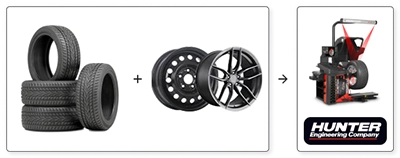Blogue
Filtres
Voir plus
Articles

Top 5 des pneus été et toutes saisons pour camionnettes en 2025 : performance, sécurité, durabilité et polyvalence
Les camionnettes sont réputées pour leur polyvalence et leur capacité à affronter les tâches les plus exigeantes sur tous types de terrains. Qu’elles soient utilisées pour le travail, les aventures ho...

Les meilleurs pneus d'été et toutes saisons pour voitures de tourisme en 2025
Vous recherchez des pneus fiables, confortables et performants pour votre voiture de tourisme ? Que vous parcouriez de longues distances sur autoroute, affrontiez des averses estivales ou conduis...

Top 5 des pneus d'été et 4 saisons pour VUS en 2025 : Performance, Sécurité, Confort et Durabilité
Avec la popularité croissante des véhicules utilitaires sport (VUS), choisir les bons pneus devient une décision essentielle pour garantir sécurité, confort et performances optimales tout au long de l...

Top 5 des pneus d'été et 4 saisons pour véhicules électriques en 2025 : Performance et autonomie optimales
Avec l'augmentation rapide du nombre de véhicules électriques sur nos routes, le choix des pneus devient une décision stratégique essentielle pour leurs propriétaires. Contrairement aux véhicules tra...

PMCtire.com prend désormais en charge les véhicules surélevés : une première pour vos pneus et roues personnalisés !
Vous êtes propriétaire d’un véhicule surélevé ou envisagez de le modifier pour améliorer son look ou ses performances tout-terrain ? Bonne nouvelle : PMCtire.com intègre désormais une fonctionnalité i...

PMCtire gagne le prix eBay d'entrepreneur émergent en commerce électronique de l'année!
PMCtire remporte le prix de commerce électronique émergent de l'Année par eBay pour 2024! Cette reconnaissance prestigieuse souligne notre approche innovante et notre dévouement à l'excellence dans la...

La différence entre les pneus d'hiver cloutés et non cloutés : Avantages, inconvénients et recommandations
L'hiver au Canada impose des conditions de conduite souvent difficiles. Il est donc crucial de bien choisir ses pneus d'hiver. Parmi les options disponibles, vous pouvez opter pour des pneus cloutés]...

Les mythes courants sur les pneus d'hiver démystifiés - Déconstruire les idées fausses sur les pneus d'hiver
L’arrivée de l’hiver s'accompagne souvent de nombreuses questions sur les pneus d'hiver et leurs alternatives. Pourtant, de nombreux mythes persistent concernant leur utilité, leur performance et le...

Pourquoi réduire la taille de mes roues en hiver ?
Depuis plusieurs années, nous observons une tendance chez les constructeurs automobiles : des roues de plus en plus grandes équipent les nouveaux véhicules. Prenons l'exemple de BMW, où le modèle X7 p...

Rouler en toute sécurité en automne : 5 erreurs courantes à éviter avec vos pneus
L'automne est une saison de transition, marquée par des températures en baisse, des précipitations plus fréquentes, et des conditions de conduite variables. Ces changements peuvent avoir un impact dir...

Comprendre les motifs de bande de roulement des pneus: comment monter, balancer et installer les différents types de pneus à la maison ou par un mécanicien
La saison hivernale approche à grands pas, et il est presque temps pour la plupart des Canadiens de passer de leurs pneus d'été ou toutes saisons aux pneus d'hiver. Comprendre les motifs de bande de r...

Test du 25 cents pour les pneus: vérifiez vos pneus d'hiver et préparez-vous pour la saison à venir
À l'approche de l'hiver, s'assurer que votre véhicule est prêt pour des conditions glaciales et enneigées est crucial pour une conduite en toute sécurité. Un des aspects les plus importants de la prép...


